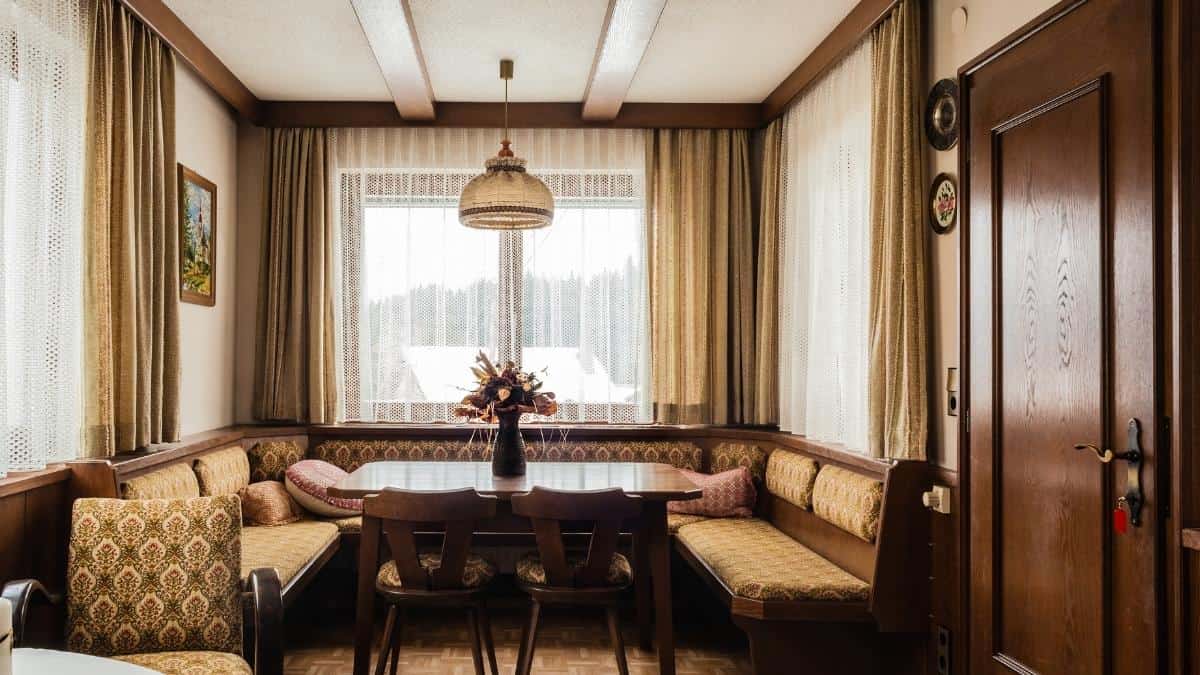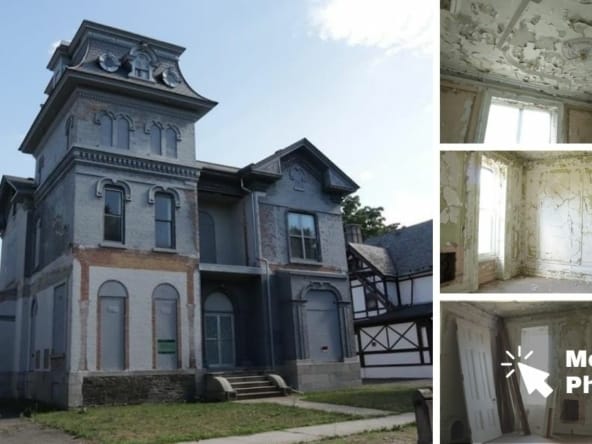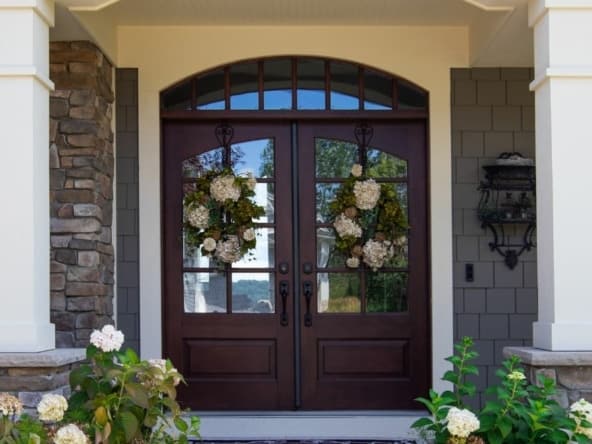With the higher housing prices, you might consider buying an older house to save money. On average, they cost 10-30% less upfront than new homes. It’s hard to ignore numbers like that. But is it worth it?
Older homes may come with costly repairs or renovations. They might not all come with those costs, and the amount you pay will vary. It can still be cheaper than buying a new home. You’ll just have to be careful and consider each house individually.
What are the risks of buying an old house? Let’s look at some common issues and what you can do to offset them.
What Counts As Old?
First, we should establish what constitutes an old house. You’ll find a lot of variation in what people think, so there aren’t any hard and fast rules like in other industries.
Technically speaking, a home is no longer new after it’s been inhabited for two years. Conversely, a house is considered a historic place once it’s 50 years old. Any house built before 1972 can be registered with the National Park Service as historical.
That leaves a lot of wiggle room. Since a 50-year-old home is for sure old, you may also want to consider houses around 30 years old.
Read More: Does the Age of a House Matter?
What Are the Risks?
These risks are the most common that come up in older homes as a result of unsafe building regulations or low-quality building materials. Keep in mind there may be other risks unique to the house. Many factors contribute to a house’s condition.
1. Asbestos
People commonly used asbestos as insulation in homes from the 1930s to the 1980s. It technically was in use in the 1800s, but it wasn’t as popular then. Asbestos is incredibly dangerous.
It became illegal in 1977, so any house built before then could have asbestos, as well as some, built a few years later. There have been homes from 1980 with asbestos-containing materials in them, too.
2. Lead Paint
Exposure to lead is hazardous, even for short periods. Unfortunately, it was used in paint which was used in many ways on houses for a long time. Lead paint became illegal in 1978, so any house built before then probably has some.
3. Foundational Problems
Modern houses are built with thick, concrete slabs as a foundation. The concrete slab didn’t become a popular choice until after World War II, and even when it did become popular, the slabs weren’t as thick. Before concrete slabs, people used beams and posts.
Any house built before the 1950s could have a weak foundation. It can sometimes be difficult to tell when a foundation is failing, but there are some warning signs you can look out for.
Here are some warning signs:
- Uneven floors
- Doors and windows that stick
- Drywall cracks
- Cracked concrete foundation
Aside from the cracked concrete foundation, the other warning signs aren’t necessarily indicative of foundational problems. They all can be, so you should investigate further if you notice any of them.
4. Electrical Problems
It’s a guarantee you’ll have to update your electrical system when you move into an old home. The real question is how much it’s going to cost. There are a variety of issues that may need addressing.
Here are some signs to look out for:
- 2-prong outlets (ungrounded)
- Frequent power outages
- Flickering or dim lighting
- Warm light switches or outlets
Electrical systems in old homes can’t handle modern energy demands. Wiring, service panels, and circuit breakers need to be updated. If the outlets are 2-prong, they’re ungrounded and need to be changed.
Read More: Is It OK To Buy a 70 Year Old House?
5. Insurance Costs
Since the price of insurance is based on risk, insuring an older home can be expensive. Insurance providers are familiar with the repair costs of an old home and will account for that in the price they quote you. You may want to get some quotes early so you can adjust your budget if need be.
6. Deteriorating Roof
A deteriorating roof is consistently a problem with older homes. The roof’s condition can be affected by the type of shingle used, the local weather, the maintenance record, the installation quality, and the roof grade.
Shingles will have different lifespans, and some regions have much harsher weather than others. You should keep an eye out for missing shingles, bowing gutters, and moisture in the attic.
7. Issues with Water
People used to dig wells by hand and have that as their sole water source. If you’re buying an old home, you have a higher chance of having a hand-dug well. The problem with hand-dug wells is that they’re shallow, and shallow wells are more at risk of having contaminants.
Another issue may arise if there is lead paint in your pipes. Older pipes with lead paint can decompose and let lead paint particles into your drinking water.
8. Plumbing Problems
There may be other pipe issues besides lead paint. Pipes made of polybutylene are susceptible to cleaning-product erosion, which leads to bursting. There may also be tree roots growing through your plumbing system.
Here are some signs you may have a plumbing issue:
- Low water pressure
- Slow water drainage in sinks, bathtubs, or showers
- Leaks beneath/around faucets
These signs can be indicative of other problems, too. It’s best not to leave these issues unattended, even if they don’t seem too serious.
9. Energy Efficiency
The inefficiency comes from outdated electrical systems and the loss of heat or air. Older homes had less insulation (if any), single-pane windows, and leaking ductwork. You can upgrade an older home to be more energy efficient, but you have to notice it first.
Here are some things to look out for:
- There’s a draft even with closed windows
- Condensation between layers
- Trouble opening windows
- Empty space in places where insulation should be
Depending on where you live, this may not even be a huge issue. If the climate is mild year-round, you won’t need to run the heat or air a lot.
Read More: What Should I Look For When Buying An Old House?
10. Toxic Gasses Affecting Air Quality
Radon and carbon monoxide are common in older homes. Radon comes from the breakdown of uranium in the soil, and carbon monoxide can come from outdated appliances leaking. They’re both dangerous and hard to detect because they’re odorless and colorless.
11. Insects and Pests
Pests are an issue in newer homes, too. They’ve just had time to do more damage to old houses, especially ones that were uninhabited for long periods. Termites can do severe damage, and it may not be evident at first.
12. Outdated Layouts and Features
Old homes have smaller floorplans that aren’t as open as modern homes. There might be a small kitchen with old appliances, popcorn ceilings, or an unfinished deck. Hopefully, none of these features are dangerous, but you may want to change them.
Here are other commonly outdated components and systems. The expected lifespan would be a best-case scenario if the items were maintained.
| Components and Systems | Expected Lifespan |
| Appliances | Gas Range- 15 years Dryer- 13 years Fridge- 13 years Dishwasher- 9 years Microwave- 9 years |
| Doors | Vinyl doors- 20 years Screen doors- 40 years French doors- 30 to 50 years Fiberglass, steel, wood- the life of the house Closet doors- the life of the house |
| Electrical and Lighting | Electrical accessories- 10+ years Lighting controls- 10+ years Copper plated wiring, bare copper wiring- lifetime |
| Faucets and Fixtures | Kitchen faucet- 15 years Kitchen sink- 50 years Shower enclosure- 50 years Showerhead- lifetime Toilet- lifetime Toilet components- lifetime w/ maintenance |
| HVAC | Water heater- 10 years Tankless water heater- 20 years Air conditioner- 10 to 15 years HVAC components- 15 to 25 years |
| Insulation | Lifetime with no damage |
| Roofing | Asphalt- 20 years Fiber cement- 25 years Wood shakes- 30 years Slate, copper, or clay- 50 years |
| Walls, Ceilings, and Finishes | Life of the house |
What Can You Do To Counteract the Risks?
The best things you can do to counteract these risks are to use a realtor with experience selling older homes and get inspections done. Almost every issue listed can be addressed by a detailed inspection performed by a well-qualified inspector.
A realtor that has experience selling older homes can be a tremendous help. They’ll know which inspections you need to get done and who the best person for the job is. If you do need to make repairs or renovations, they can also help find contractors.
Wrapping Up
What are the risks of buying an old house? Now that you know the answer to this question, don’t let these risks scare you away from buying old houses. Let them inform you and guide you to the best house for you.




